Anyone who frequently records, edits, or shares videos knows the struggle of dealing with oversized files. Whether for marketing campaigns or personal projects, these uncompressed videos often cause delays. Large video files can slow uploads and cause frustration when sending files via email.
That’s why video compressor tools have become essential in today’s digital age. This article covers efficient online/Android video compression free tools, including their key features and limitations. By the end, you will be introduced to an efficient repairing tool to enhance video quality online with ease.
Table of Contents
Part 1. How to Compress Video Without Losing Quality - 5 Online Options
To help you choose the right online-based solution, the following section outlines the best online video compress free tools:
1. FreeConvert
Users can use this online solution to compress multiple formats, including MP4, AVI, and MKV, so that they can work with any format. FreeConvert also lets you compress the video by a target percentage or by a set size. Furthermore, it supports modern codecs such as H.264 and H.265, enabling HD and 4K video playback.
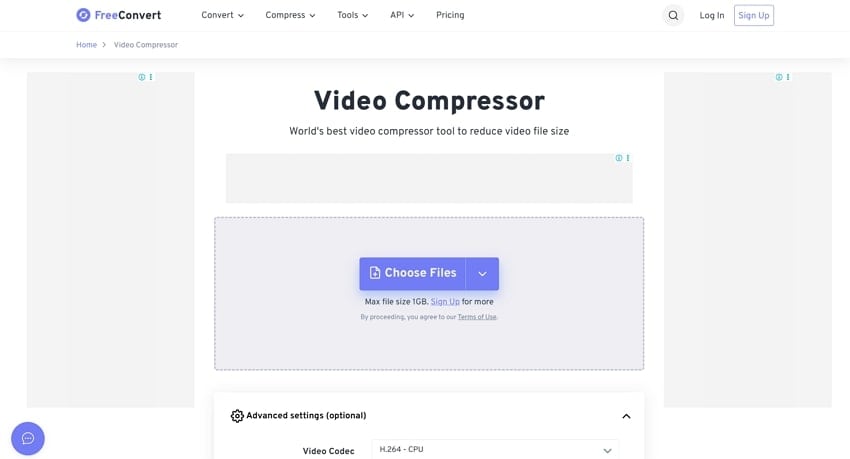
Key Features
Provides “Constant Rate Factor” settings to control perceived quality and presets.
Offers a “By Max Bitrate” option that is useful for streaming scenarios.
Includes an option to resize video dimensions to smaller resolutions.
Cons
Using high compression can significantly damage the overall video quality.
To compress larger videos, you need to buy the premium version.
2. VEED.io
This online video compressor free downloader reduces video file size in minutes while maintaining quality. This tool supports a wide range of formats, including MOV, WEBM, GIF, and more. Plus, it offers advanced settings that let users adjust resolution for precise control. Users can easily adjust the quality and resolution using a simple slider bar.
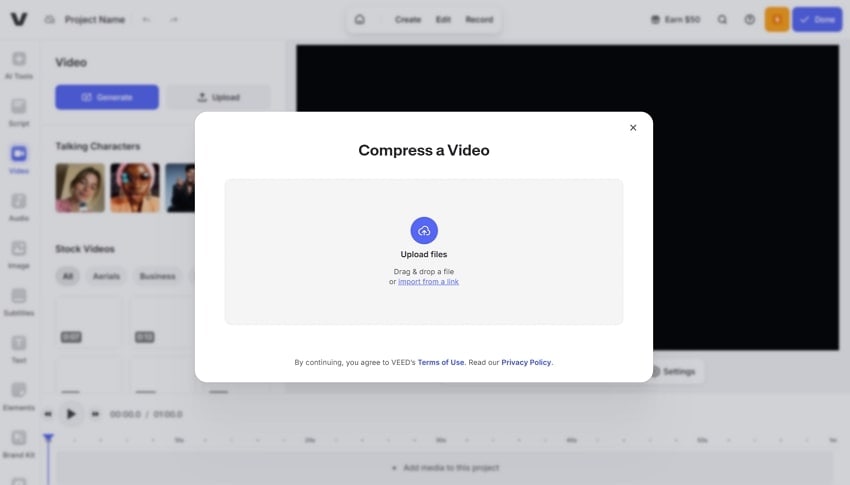
Key Features
Provides a full editor that lets you add subtitles and auto-transcribe the video.
Allows free compression of videos up to around 1 GB per file.
Automatically balances video quality and size of the video by simply importing it.
Cons
As an online tool, it requires a stable internet connection to compress videos.
Advanced options can be overwhelming for beginners unfamiliar with technical terms.
3. Compress2GO
The Compress2GO online program lets users compress videos directly in the browser without downloading the video compressor Android app. Users can easily convert various video formats, including MP4, AVI, MOV, and MKV, across this service. All compressed files are converted to MP3 format to ensure compatibility across multiple platforms.
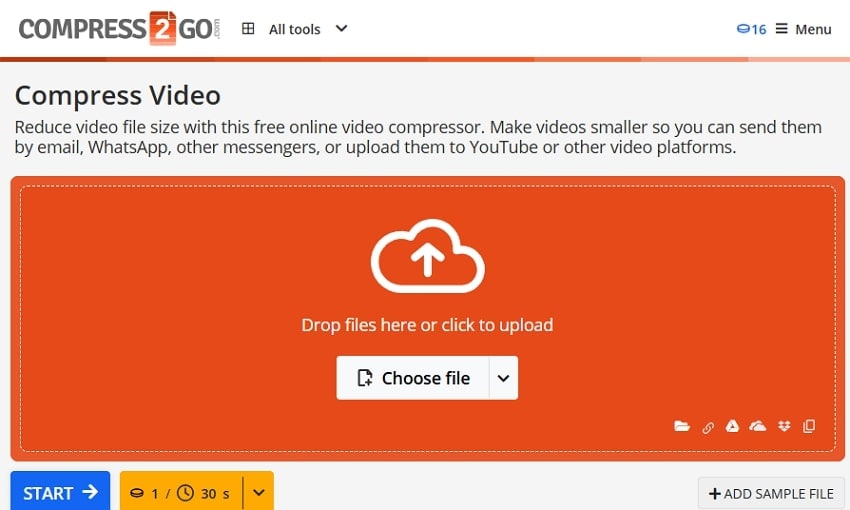
Key Features
Provides an intuitive interface for instantly compressing videos.
Being a part of a multi-tool platform, it also lets you compress PDFs and images.
Lets you export directly to OneDrive, Google Drive, Dropbox, and more.
Cons
Users cannot retain the original format of the compressed video using this tool.
Larger files may take longer to process, and compression quality may also degrade.
4. Clideo
Clideo’s online video compressor free enables quick video uploads, parameter selection, and efficient compression. It provides an intuitive interface, which suggests it is designed for beginners. Moreover, users can work with any popular video format, including WMV, VOB, and rare formats. You can easily access its video compression facility without creating an account.
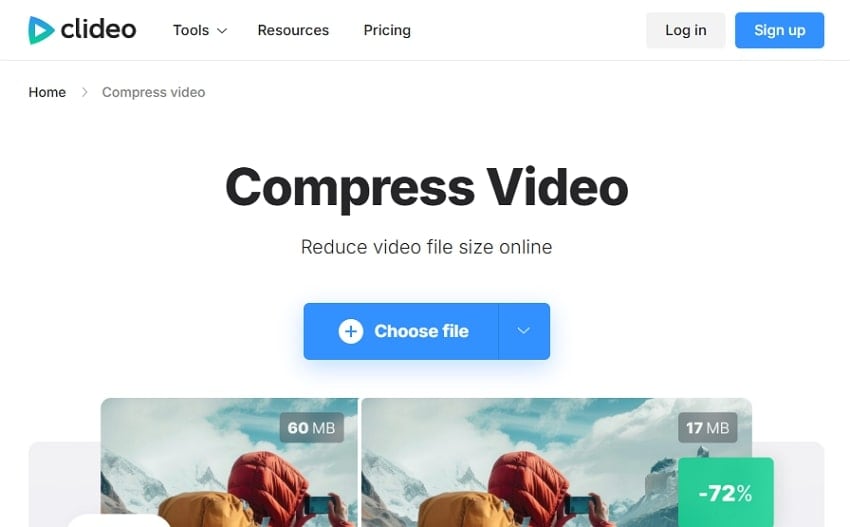
Key Features
Provides a preset that targets different video compression levels.
Its web interface is responsive and works directly in any web browser.
Integrated with other Clideo tools, this allows users to do basic video editing.
Cons
Free video compression exports videos with watermarks on them.
Limited advanced editing controls compared to professional desktop software.
5. CapCut
As a popular editing tool, it uses smart algorithms to compress video files while ensuring accuracy. While compressing, users can tweak, crop, and adjust the resolution of the video according to requirements. Plus, it provides cloud storage, enabling users to share compressed videos and collaborate in real time easily. Overall, CapCut is a complete suite providing every basic editing feature required for your video editing.

Key Features
Handles all common formats, including MOV, MP4, AVI, MKV, and others.
Provides a preview option to examine the overall video quality after compression.
Its export options are designed to boost faster uploads via various websites.
Cons
Options such as adjusting bitrate and frame rate can be overwhelming.
Your data is stored in its cloud storage, which can pose a risk to your privacy.
Part 2. Video Compressor App for Android: Which One Should You Pick?
With online tools covered, it’s time to explore the video compressor apps for Android and determine which one best fits your needs:
1. Compress Video Size Compressor
This Android app uses the x264 or HEVC (x265) codecs to compress large video files. Users can choose from preset compression sizes or manually enter a custom target. This tool offers features such as resolution adjustment and selection of the desired quality level. Plus, you can queue multiple videos to access the batch processing system.
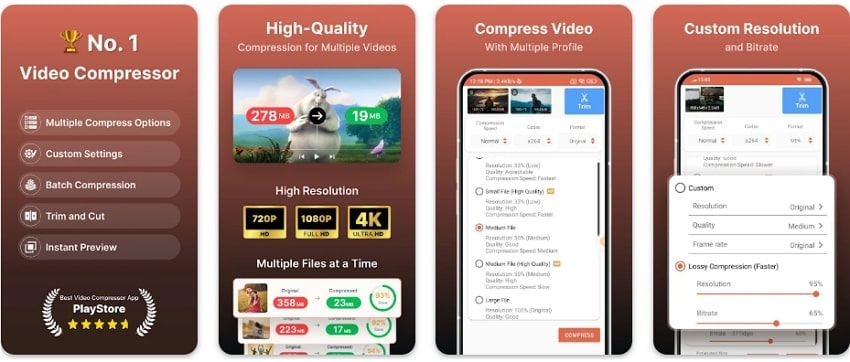
2. Panda Video Compressor & Convert
To know how to compress video on Android, users can use this app, which reduces file size without compromising quality. It lets you minimize video size by specifying the target file size in MB, GB, or KB to manage overall storage. Furthermore, users can change between different codecs, including H.264 to H.265/HEVC or VP9.
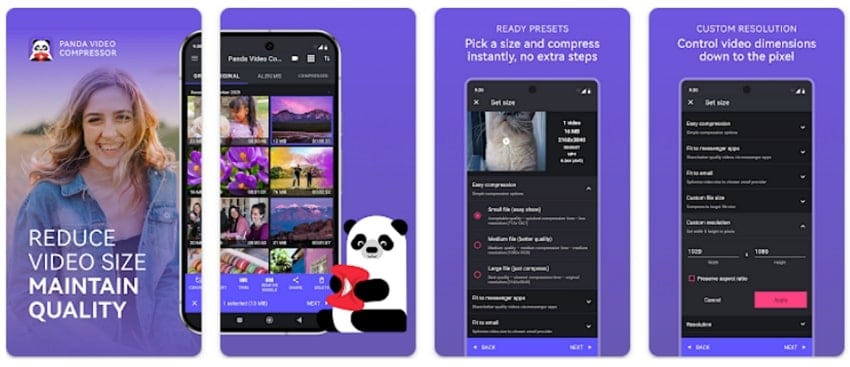
3. Video Compressor MP3 Converter
Users can easily compress videos of any size or format to free up storage and improve workflow. This Android app to compress video supports all major file formats, including MP4 and MOV. Users can also extract the audio from video to create MP3 files and use them as an audio converter. Furthermore, it lets you adjust the video playback speed while maintaining export quality.
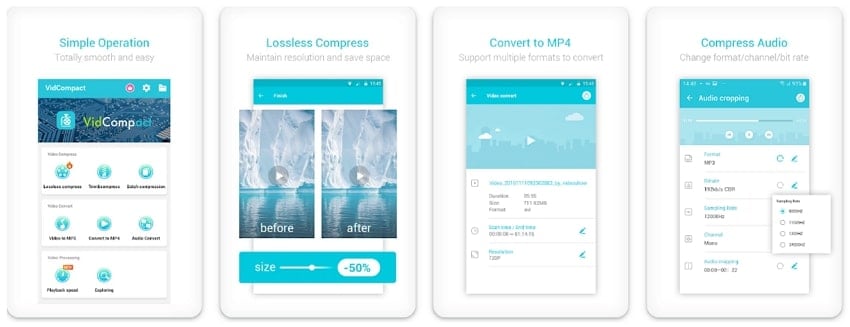
Pro Tip. Fix Blurry Videos While Compressing with Repairit Online Video Enhance
A small business owner shot a quick product demo video on their phone to send to the client. However, when he tries to email the video, it exceeds the email size limit. To meet the limit, he used an online/Android video compressor free tool, but the quality is degraded. In this scenario, we recommend using the Repairit Online tool, which uses advanced AI algorithms to enhance the overall video quality.
Users can upload low-quality videos, and they will be repaired in a few minutes. This efficient tool can enhance the video quality lost during compression. You can also upscale the video quality to HD, 2K, or 4K. Besides, the key benefit is that you can enhance the video files up to 3 GB in size to improve workflow.
Key Features

-
Video Formats: Repairit Online supports all major video formats, including MP4, MOV, FLV, MXF, and M4V.
-
One-click Workflow: This tool provides an intuitive interface to simply upload the video and choose the desired enhancement level.
-
Quality Detection: It uses advanced AI to automatically detect pixelation and apply the appropriate enhancement level.
Extensive Guide on How to Use Repairit Online
While exploring the video compressor Android tools, have a look at the following guide to repair degraded videos online with Repairit:
Step 1. Insert the Pixelated Video to Repairit Tool
Navigate to the “More Features” and choose the “Video Enhancer” feature. Next, click on the “Add Video” button to insert the blurred videos from the device folder.
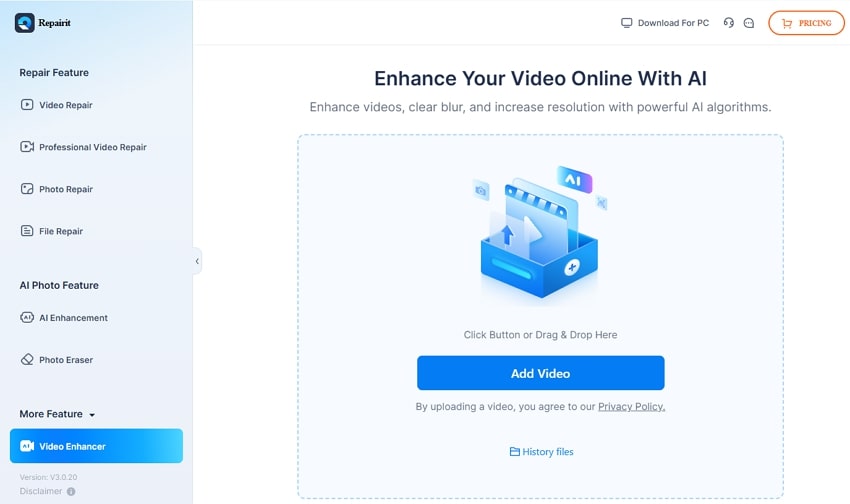
Step 2. Initiate the Video Enhancing Procedure
Upon inserting the pixelated video, choose the “Start” button to start the video-enhancing procedure instantly.

Step 3. Export the Upscaled Outcome to the Device
Once done, you can choose the “Download” button to save the enhanced video to your device.
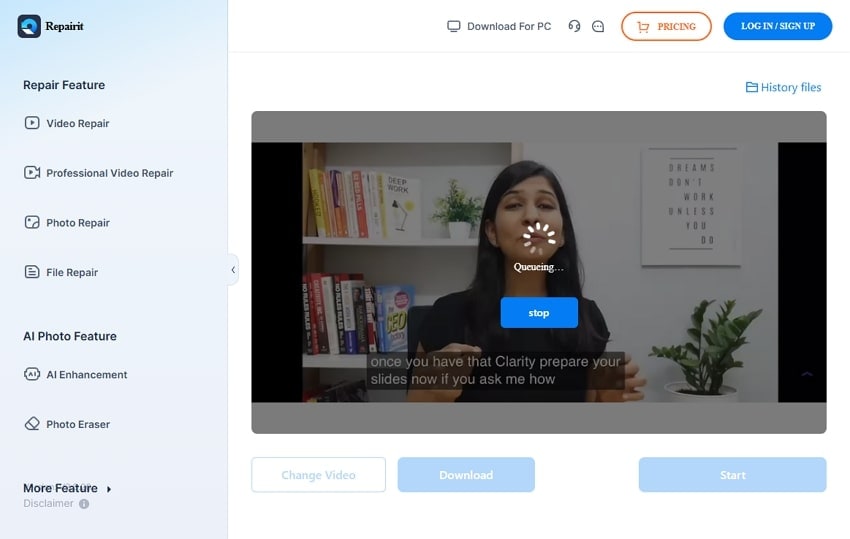
Enhance Your Compressed Video Now

Conclusion
In conclusion, anyone can compress their video files to achieve the desired size for targeted platforms. This article has covered both online video compressor free tools and Android apps, along with their key features. However, if you lose the video quality, we recommend using the Repairit Online Video Enhancer tool, which utilizes AI technology to enhance video quality.
Frequently Asked Questions
-
Q1. Why does my compressed video sometimes look worse than the preview?
Many tools generate a low-resolution preview or apply lighter compression on the videos. Afterwards, when users export the video, it may look worse and pixelated. -
Q2. What bitrate should I choose for social media uploads?
Most common platforms use basic bitrates like a few Mbps for 1080p video quality. However, always preview the compressed outcome to ensure the video quality is not disturbed. -
Q3. How much can I compress a video before viewers notice the difference?
If users do light to moderate compression, it often reduces the size by 30–60% with minimal impact. Although if you use excessive compression, it will introduce noticeable blur and loss of details. -
Q4. What to do if you lose video quality while compressing to the device?
If you have lost the quality after using the Video Compressor Android app, opt for Repairit Online. This tool lets you repair video quality by simply inserting the damaged file.

![[Online & Android] Video Compressor Free Options: Shrink Videos Easily](https://images.wondershare.com/repairit/article-trans-image/2900/online-video-compressor-free-1.jpg)
 ChatGPT
ChatGPT
 Perplexity
Perplexity
 Google AI Mode
Google AI Mode
 Grok
Grok

